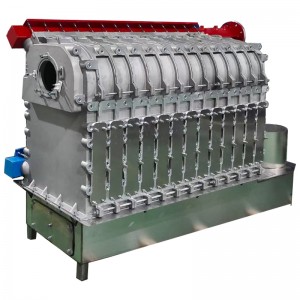des . 31, 2024 11:07 Back to list
molds for aluminum casting
Molds for Aluminum Casting An Overview
Aluminum casting is a widely employed manufacturing technique that involves pouring molten aluminum into molds to produce specific shapes and components. The efficiency and quality of the final products largely depend on the type of molds used in the casting process. Understanding the different types of molds available and their respective advantages can be crucial for manufacturers looking to optimize their operations.
Types of Molds
1. Sand Molds Sand casting is one of the most traditional methods of aluminum casting. It involves creating a mold from a mixture of sand and a binding agent. The primary advantage of sand molds is their ability to produce complex shapes with intricate details. Additionally, sand molds are cost-effective and suitable for both low and high production volumes. However, they have a relatively coarse surface finish and may require additional machining to meet tighter tolerances.
2. Permanent Molds Unlike sand molds, permanent molds are made from metal, allowing for better heat conduction and a smoother surface finish. This type of mold is typically used for high-volume production of aluminum parts because it can be reused multiple times. Permanent molds help reduce waste material and improve dimensional accuracy. However, the initial cost of fabrication is higher compared to sand molds.
3. Die Casting Molds Die casting is a specialized form of casting that involves forcing molten aluminum into high-pressure molds. This technique produces high-quality components with excellent dimensional precision and surface finish. Die casting molds are often made of steel or iron, which can withstand the high pressures involved in the process. This method is ideal for producing large quantities of components quickly, but the high initial costs and complexity of the mold design can be prohibitive for smaller production runs.
4. Investment Casting Molds Also known as lost-wax casting, this method involves creating a wax model of the desired component, which is then coated in a ceramic shell to form a mold. Once the shell hardens, the wax is melted away, leaving a cavity for the molten aluminum. Investment casting allows for highly intricate designs and excellent surface finishes. However, it is a more labor-intensive and time-consuming process, making it best suited for smaller production runs or specialized components.
Factors Influencing Mold Selection
molds for aluminum casting

When selecting the appropriate mold for aluminum casting, manufacturers must consider several factors
- Production Volume Low-volume production might benefit from sand or investment casting, while high-volume needs are better served by permanent or die casting molds. - Complexity of Design Intricate designs requiring detailed features are more easily achieved with sand or investment casting.
- Budget Constraints The initial investment in mold creation varies greatly, influencing which method is more feasible based on the budget.
- Surface Finish Requirements Depending on the application, some components may require smoother finishes than others, affecting mold choice.
- Mechanical Properties The end-use of the aluminum parts may require specific characteristics in terms of strength and durability, which could guide the selection of the casting method.
Conclusion
Molds play a crucial role in the aluminum casting process, influencing factors such as production efficiency, cost, and part quality. By understanding the different types of molds available and evaluating the specific needs of their production scenarios, manufacturers can make informed decisions that enhance their casting operations. As technology continues to advance, innovations in mold design and materials are likely to further improve the possibilities in aluminum casting, paving the way for greater efficiency and improved product quality in the industry.
-
Centrifugally Cast Iron Water Main Pipe | Ductile Iron Solutions
NewsAug.24,2025
-
Durable Cast Steel Concrete Pipe Mold Bottom Rings & Base Trays
NewsAug.23,2025
-
Centrifugally Cast Iron Water Main Pipe for Reliable Mains
NewsAug.22,2025
-
Durable Centrifugally Cast Iron Water Main Pipe
NewsAug.11,2025
-
Centrifugally Cast Iron Water Main Pipes for Reliability
NewsAug.10,2025
-
High-Quality Centrifugally Cast Iron Water Main Pipes
NewsAug.09,2025


